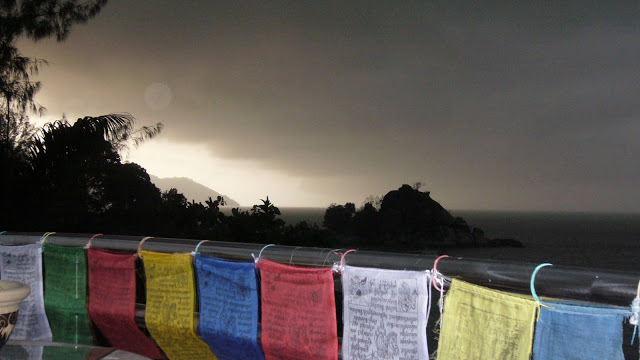Buddhist Women on a Path of Spiritual Awakening
Not Straying from Ancient Virtue

While living in monastic community, visitors often asked, “What do you do?” I would describe the daily schedule: rising early, morning and evening meditations, chanting, the almsgiving, work projects, meetings and other duties. But what I am is not just what I do or what is apparent. The physical activities of my day could not convey the inner dimensions of my contemplative life.
Outside the exclusive monastic environment, I am an anomaly, conspicuously out of step with the rush of the world. The same questions I addressed in the monastery follow me here to the concrete fields of suburbia. I must draw from my own faith and experience to answer them, endowing myself with the ambassadorship of our tradition. Still, I cannot adequately portray the ancient process unravelling in me through the simple rhythms and rituals of my days.
So I ponder and re-evaluate what my being and doing mean as a nun outside the cloister. What value does my way of life bring to those around me, my urban neighbours, with whom I have limited contact and who see me as quite alien?
While I left the world behind long ago to enter the monastic fold, my renunciation is not defined by being resident in a monastery – nor is it diminished by living outside of one. I did not simply exchange fashion for robes, a bowl and shaved head, nor abandon certain activities in favour of others.
I truly leave the world when I stop ‘doing’ according to worldly aims and values. This means living with integrity, kindness and wisdom. It also means I am a renunciant – not because I have few possessions – but because I strive to give up my attachment to them.
Sustaining this style of life is difficult in a world churning with greed for, and accumulation of, wealth, power and pleasurable experiences at a frantic pace. Even as a meditator, it is easy to fall into the trap of trying to store up blissful mind states as the measure of my practice and spiritual development. It is not.
The riches of my life lie in fully opening to and fathoming the changing seasons of the heart: the fear, weariness, disappointment and insecurity of being unable to provide my own basic needs, or the uplifting faith, joy, and gratitude for the blessings that do come. These insights save me from circling endlessly in my own suffering or spreading it further. And they enable me to share the fruits of the peace they bring with those around me.
Even when I can endure and be content with little, I sense a pernicious psychological need for approval, encouragement, and appreciation – to be remembered and cared for beyond the physical requisites of life. These yearnings of the heart undermine the practice of renunciation.
One day as I sat in the waiting room of a doctor’s clinic, an older woman next to me asked about my robes and how I lived. Our conversation was congenial enough until it emerged that my supporters paid for my medical treatment. “Not bad,” she snapped. “You don’t even work and you get everything for free.”
Before I became a nun, I myself had a similar attitude when I learnt about a friend who regularly drove for an hour in the early morning to bring breakfast to a Burmese monk. But now that I too live dependent on the kindness of the laity, I see the beauty in her actions.
Contemplative sacrifice radically departs from conventional values. The people who support me are touched by a quality that they trust and know to be true. I am also vulnerable to censure from those not yet ready to open to that truth. Recognizing this, I could more easily forgive the uncharitable attack in the doctor’s waiting room.
I choose to live within society, to be connected to its heartbeat, and more accessible to those who may never visit a monastery but feel an existential lack or thirst for something noble. When they come close, they often find that well of goodness within themselves. And the beauty they love becomes what they do.
© Ayyā Medhānandī
This a post from Ayyā Medhānandī’s blog written while based in Penang. She draws on her experiences in a monastic community in England as a solitary nun in a coastal hamlet of New Zealand and as an urban nun perched in a ‘sky temple’ overlooking the Malacca Straits. Other posts from this blog can be found under “Penang’s Blog” topic category.
